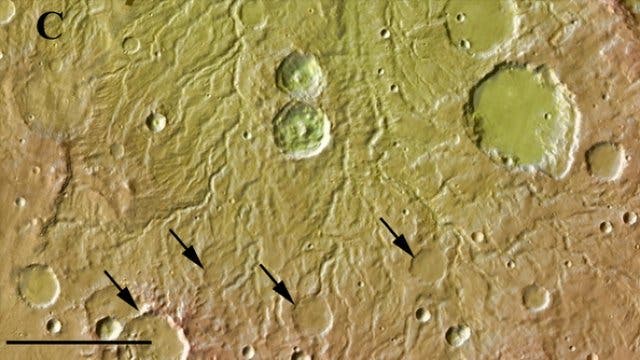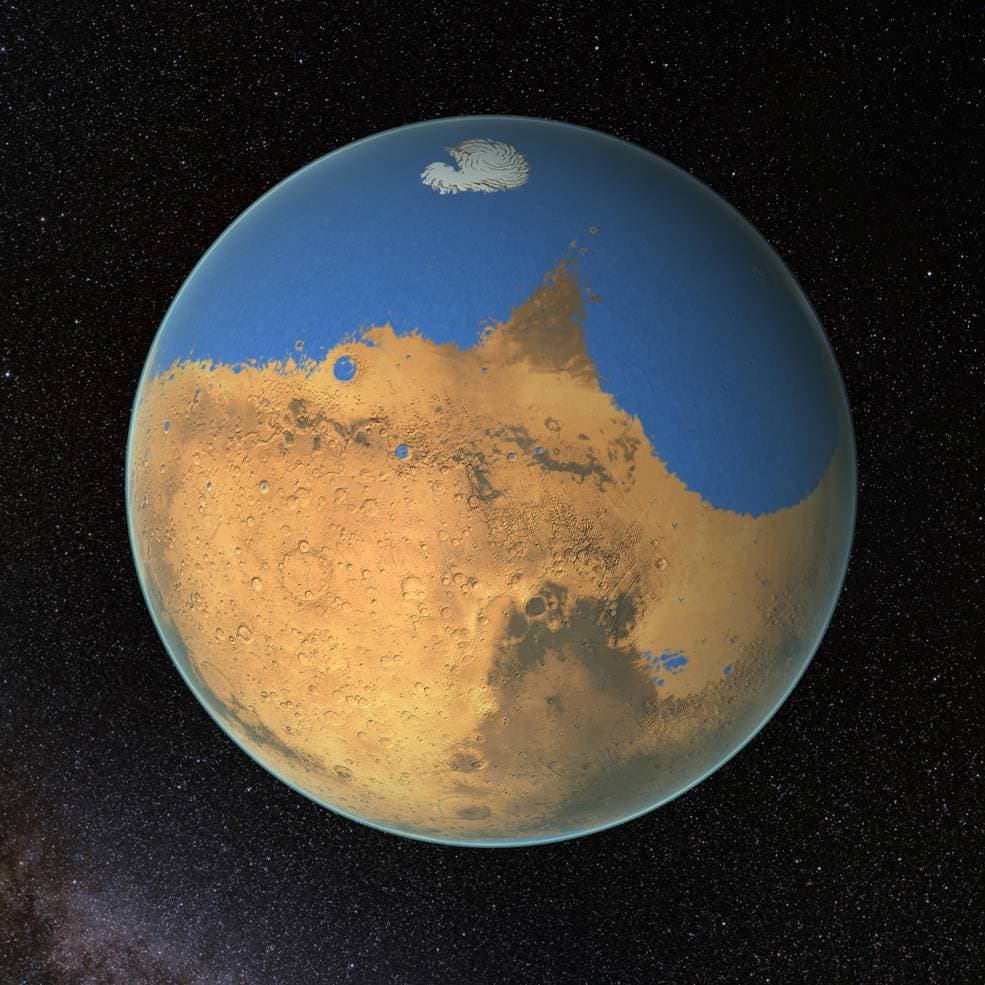Mars, the fourth planet from the sun, is a desolated wasteland. But billions of years ago, it held more water than Earth’s Arctic Ocean. In other words, it was very similar to Earth in many respects, as evidenced by geological features like canyons, channels, craters, and valleys. Although it doesn’t rain at all today on Mars most of these features were carved by rainfall, according to an amazing study recently published by researchers at the Smithsonian Institution and the Johns Hopkins University Applied Physics Laboratory.

The team led by geologists Dr. Robert Craddock and Dr. Ralph Lorenz turned to the same vetted methods used here on Earth to determine the erosive effect of rain on the planet’s surface. By reverse engineering from the kind of geological features present today, the team was able to assess how powerful rainfall must have been across Mars’ geological history.
By using basic physical principles to understand the relationship between the atmosphere, raindrop size and rainfall intensity, we have shown that Mars would have seen some pretty big raindrops that would have been able to make more drastic changes to the surface than the earlier fog-like droplets,” commented Dr. Lorenz of John Hopkins University, who has also studied liquid methane rainfall on Saturn’s moon Titan, the only other world in the solar system apart from Earth where rain falls onto the surface at the present day.
When the researchers applied the same Earth physics to valley networks on Mars, they not only found that it used to rain on Mars — but that it was so considerable it permanently altered the planet’s surface.
“In addition to modified impact craters, valley networks, alluvial fans, and analyses of fluvial sediments at a variety of landing sites, large outflow channels, evidence for crater lakes, intracrater lakes, and a northern ocean attest to large bodies of liquid water on the surface, which is predicated by rainfall,” the authors wrote in the journal Icarus.

The whole analysis first starts with assessing the planet’s atmosphere since it’s the main primer for rainfall. Some 4.5 billion years ago when both Mars and Earth formed, the Red Planet had a very thick atmosphere, unlike the thin veil that passes for an atmosphere today. This meant that the atmospheric pressure was very high, which in turn altered rainfall patterns. The more pressure there is, the smaller the raindrops and early on in Mars’ existence, the droplets must have been very small producing something more akin to fog than what we’d familiarly call rain.
[ALSO SEE] How it rains on different planets
For instance, Dr. Lorenz claims early Mars had an atmospheric pressure of 4 bars or four times higher than the atmospheric pressure on Earth’s surface today. At this kind of pressure, raindrops could not have been bigger than 3mm across. For this diameter, the raindrops couldn’t penetrate the soil but once the pressure fell to 1.5 bars, the droplets could grow bigger and fall harder. Literally drop by drop, the Martian geology became altered as the raindrops cut through soil. Considering conditions at the time, had the pressure been the same as that on Earth, Martian raindrops would have been 7.3 mm across or a millimeter bigger than here on Earth.
“There will always be some unknowns, of course, such as how high a storm cloud may have risen into the Martian atmosphere, but we made efforts to apply the range of published variables for rainfall on Earth,”said Dr. Craddock in a statement. “It’s unlikely that rainfall on early Mars would have been dramatically different than what’s described in our paper. Our findings provide new, more definitive, constraints about the history of water and the climate on Mars.”
Journal reference: Robert A. Craddock, Ralph D. Lorenz. The changing nature of rainfall during the early history of Mars. Icarus, 2017; 293: 172 DOI: 10.1016/j.icarus.2017.04.013
Was this helpful?



